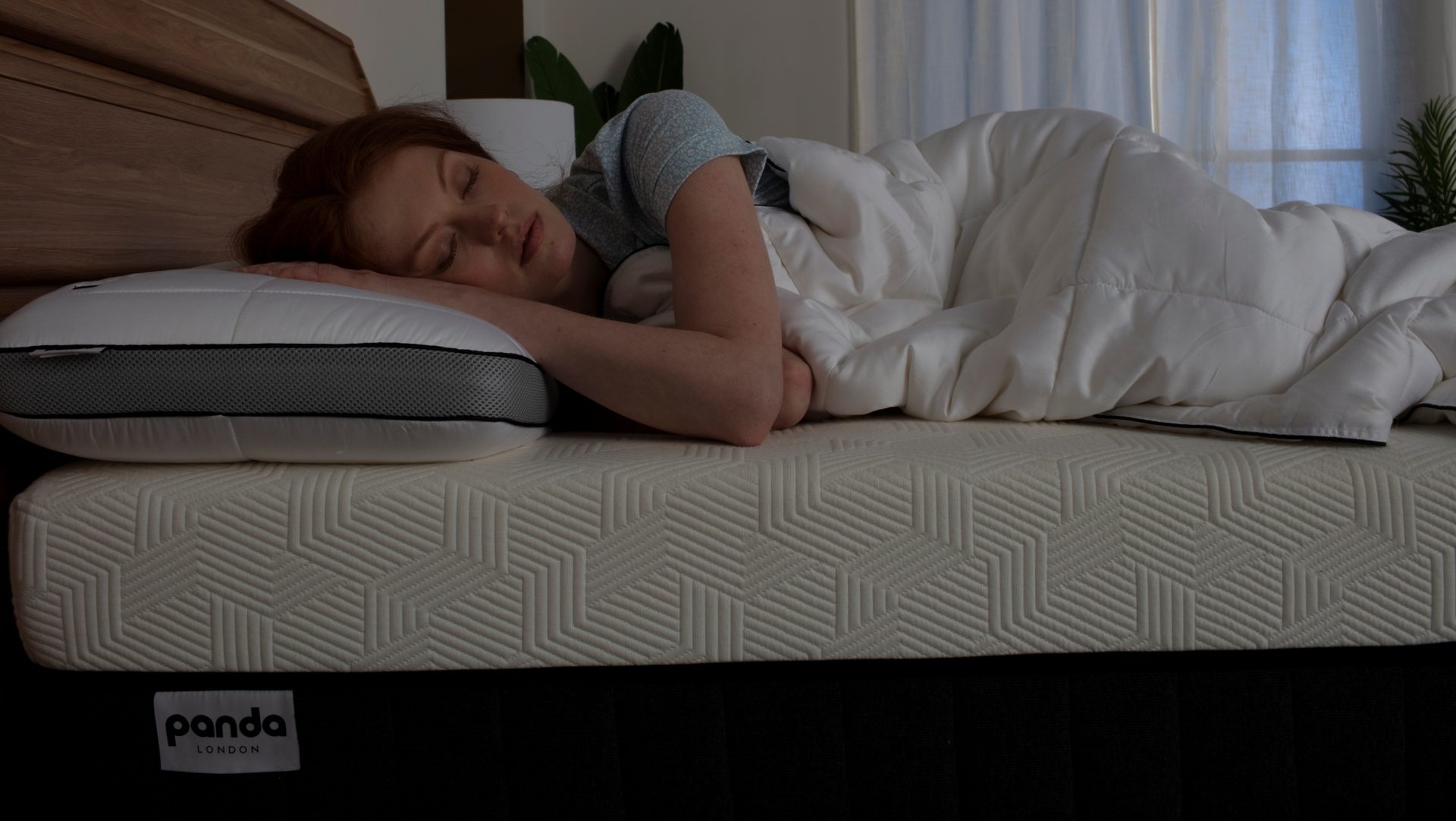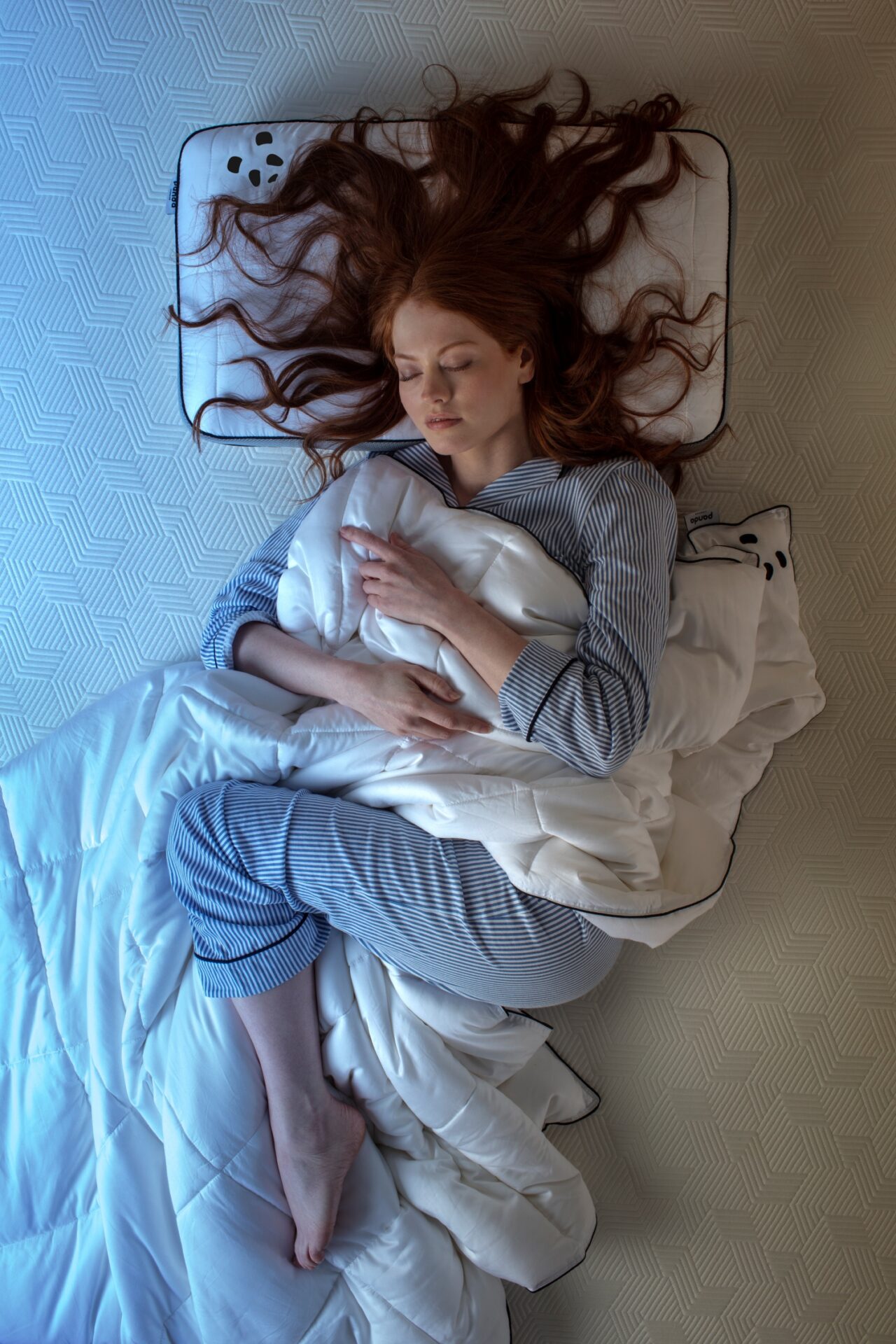Last updated on April 15th, 2024 at 12:08 pm
Key Takeaways
- Quality Sleep’s Crucial Role: Adequate sleep is vital for overall health, impacting physical recovery, mental clarity, and emotional stability.
- Importance of Sleep Posture: Good posture, whether on the side or back, is essential for spinal alignment and can help alleviate common issues like snoring and back pain.
- Selecting the Right Pillow: The right pillow, tailored to individual posture and preferences, significantly enhances sleep comfort and spinal health.
- Creating an Ideal Sleep Environment: A cool, dark, and quiet bedroom promotes better sleep quality by aligning with the body’s natural sleep/wake cycle.
- Lifestyle Adjustments: Modifications such as optimizing diet, establishing a bedtime routine, and minimizing caffeine and alcohol intake before bed can improve sleep.
- Addressing and Consulting on Sleep Issues: Implementing practical solutions (like cooling pillows) and seeking professional advice can be key to better rest for ongoing sleep challenges.
Quality sleep is a cornerstone of good health – it influences our physical, mental, and emotional state. Achieving restful and rejuvenating sleep involves various factors, including proper posture and pillows that best support our needs. In this ultimate guide, we will delve into the essentials of optimising sleep, focusing on a few things: the significance of maintaining good posture, selecting the right pillows to enhance comfort and alignment, creating an ideal environment, and more. With expert commentary from sleep coach Edward Gorst, it should provide you with the tools to get a better night’s sleep.
Understanding sleep
Sleep: the most natural thing in the world, but a vital process that allows our bodies and minds to rest, repair, and recharge. And it’s not always something we get right! Let’s look a little deeper into what sleep is, why we need it, and why we sometimes struggle…
What is behind the science of sleep
That’s right, there’s a science to sleep. We go through cycles known as REM (rapid eye movement) and non-REM sleep; this cycle repeats roughly every 80-100 minutes as we go through these different stages of rest. REM sleep makes up around 25% of your total sleep time, and you’ll typically have three non-REM cycles followed by one REM, and then it starts again. With each cycle, your REM stage will last a little longer.
- The first stage of non-REM sleep typically lasts 5-10 minutes; your eyes are closed, and you’re dozing, but it would be very easy to wake you up.
- The second non-REM stage lasts between 10 and 25 minutes: light sleep, and your body is getting ready to approach deep sleep.
- Non-REM sleep stage three is a nice deep sleep – it would be difficult to wake you up now.
- Then comes REM, the final stage before the cycle starts over. Your brain is more active at this stage, and you may have intense dreams; your heart rate and breathing will typically be quicker at this point, too.
Sleep also relates to our circadian rhythm, which is the natural wave of sleep/wake/sleep/wake. It reflects our daily routine: generally, we sleep when it’s dark (nighttime) and are awake during light daytime hours.
Sleep: the most natural thing in the world, but a vital process that allows our bodies and minds to rest, repair, and recharge. And it’s not always something we get right! Let’s look a little deeper into what sleep is, why we need it, and why we sometimes struggle…
What are the benefits of quality sleep
There are so many benefits to getting a good night’s sleep. It helps to heal physical wounds and prevent future diseases and disorders, aids in lowering our stress levels, protects our mental health and so much more. If we don’t get enough it, we’re more at risk of falling ill, we’re more stressed, we find it harder to concentrate and so on.
What are some common sleep disorders and challenges
Some various conditions and illnesses might prevent you from sleeping – these include insomnia, where people are unable to fall or stay asleep, and sleep apnea. The latter is where your breathing stops when you fall asleep, leading to disrupted nights. Another common issue is restless leg syndrome, also known as Willis–Ekbom disease (WED), where our limbs move involuntarily; this also prevents us from drifting off. These issues may impact the posture you choose, preventing you from getting comfortable and negatively affecting its quality.

What is the role of posture in sleep
Our posture plays a very important role in ensuring optimal sleep quality and spinal alignment.
Adjusting your sleep posture for better health
Sleep coach Edward Gorst says that “sleeping on your front has been associated with exacerbating some health problems for some individuals. In contrast, sleeping on your back or side, e.g. in the foetal position, tends to have the least health problems associated with them, such as neck or back pain, providing your neck is suitably supported by a good pillow.”
Maintaining a good posture can help prevent discomfort, reduce strain on the neck and back, and minimise the risk of developing various musculoskeletal issues. In relation to the aforementioned disorders, Gorst says: “Snoring and sleep apnea nearly always worsen when individuals sleep on their back and nearly always improve when they sleep on their sides. Therefore, this can often be unhelpful for these individuals sleeping on their backs. However, sleeping on your back has been associated with improving neck and back pain.”
Exercises and techniques to improve sleep posture
There are also certain techniques you can try to improve your posture. “The classic tip to help stop someone from sleeping on their back, if they snore, for example, is to lie on a tennis ball.” Edward Gorst says. “Sleeping with a pillow between your legs has also been said to help with any pressure or tension on the hips when sleeping on your side. Those with lower back pain can use a thin pillow to go under their lower back (if they sleep on their back).”
You might also try to strengthen your muscles with yoga, pilates, gentle stretching and so on.
How can choosing the right pillow help
Selecting the perfect pillow is essential for supporting your healthy sleep posture and minimising discomfort. Pillows come in various shapes, sizes, and materials, each catering to different sleep preferences and needs. A lot of it is trial and error, so our free 30-day trial is the perfect way to find out if a bamboo memory foam pillow would work for you!
When finding the right pillow for you, sleep coach Edward Gorst says you should “bear in mind that if you sleep on your back or front, you should aim to have a thinner pillow, so as not to strain your neck. Equally, if you sleep on your side, you should have a thicker pillow to support your neck and help to keep your spine aligned.”
Factors to consider when choosing a pillow include loft height, firmness, and material composition. Finding the right fit can significantly impact your comfort and overall well-being, whether you prefer memory foam, latex, or down pillows.

Enhancing sleep environment
Creating the perfect sleep environment can enhance the quality of your rest. Factors such as room temperature, lighting, noise levels, and bedding can all influence your experience.
How to create a sleep-conducive bedroom
Your room should be ‘just right’ in all aspects. Find a temperature that works for you (typically between 15 and 20 degrees Celsius), and ensure your room is nice and dark. A smart thermostat can help with this, as can blackout blinds or thicker curtains. Avoid any unnecessary distractions and noises where possible – loud fans or clocks that tick noisily.
Sleep coach Edward Gorst explains that “Noise, light and temperature are the three main factors affecting it’s quality. It’s always helpful to sleep in a cool, dark, quiet room when possible, as these are the conditions that can be conducive to better sleep. However, these factors are often over-hyped and no one needs to sleep in a completely dark, noise proof, eighteen degrees room.” Work out what feels comfortable for you!
The impact of bedding on sleep quality
Opt for a mattress, sheets, duvet, and bedding that complement your posture and pillow choice and really work for you. Choose breathable materials like bamboo or linen, which will stop you from overheating and keep you at optimal comfort levels all night long. Your mattress should be similar to your pillow: supporting you in just the right way for your posture.
Lifestyle adjustments for better sleep
There are also changes to your life that you can make in order to sleep better. These include following a more balanced diet, cutting down on caffeine and alcohol, avoiding heavy meals before bed, and following a set bedtime routine. It doesn’t necessarily matter what your bedtime routine consists of (as long as it’s not too over stimulating) but it is important that you try to replicate it each night. This alerts your brain that bedtime is approaching!

Troubleshooting common sleep issues
Identifying and addressing common sleep issues can also contribute to better sleep quality. We touched on them earlier: from insomnia and sleep apnea to restless leg syndrome and snoring, understanding the underlying causes of sleep disturbances can help you implement targeted solutions.
When to consult a professional
If these issues are really getting in the way of you living a healthy life, then consider seeking medical attention or consulting a specialist. We asked sleep coach Edward Gorst if there are any emerging trends in sleep health that he finds promising, and he said “For those who struggle with sleep there are lots of exciting therapies out there that are proving to be really effective at helping, such as Acceptance & Commitment Therapy.”
Lifestyle changes, relaxation techniques, and seeking professional guidance can all help resolve the issues and improve overall sleep health.
Addressing sleep disruptions
When it comes to sleep disruptions – too much light or noise, for example, or any fluctuations in temperature, there is typically an easy fix. If you find yourself getting too hot during the night, look into cooling pillows or breathable bedding. If your room is too noisy, try some earplugs. And if there’s too much light, an eye mask could be a big help!
Conclusion
In summary, it is important to consider a holistic approach to optimising sleep quality. By focusing on maintaining good posture, choosing the right pillow, creating an ideal environment, and addressing common sleep issues, you can pave the way for restful nights and energised mornings. Your health should be a priority; use the tips and strategies outlined in this guide and as a result, you should find yourself drifting off with ease.
Remember that investing in quality rest can have a profound impact on your overall health and quality of life. Embrace the journey to improved sleep by combining the right posture with the perfect pillow selection and environmental factors to create a sanctuary that supports your body and mind in achieving the rest they deserve.
Explore our range:
Baby Memory Foam Bamboo Pillow
$44.00Hybrid Bamboo Pillow
$160.00Kids Memory Foam Bamboo Pillow
$57.00 – $62.00Memory Foam Bamboo Pillow
$79.00



